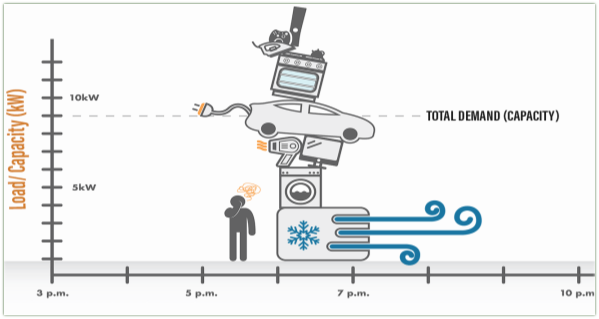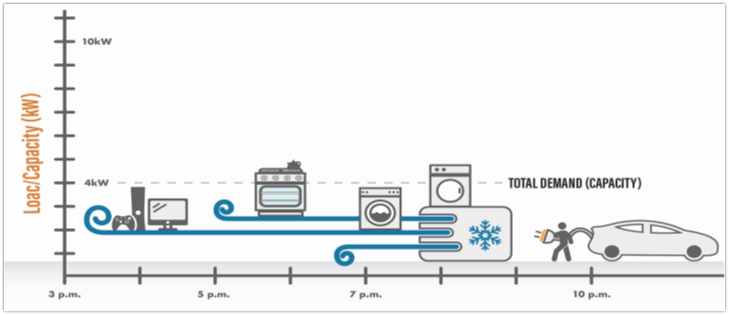Demand Charge vs Energy Charge
Energy charges are determined by the total electricity consumption measured in kilowatt-hours (kWh) over the billing period. Your meter tracks both on-peak and off-peak energy usage. Demand charges, on the other hand, reflect the rate at which you utilize electricity, representing the amount required to operate your dwelling at any specific moment. Demand charges are incurred based on the peak level of electricity consumption during the billing period and the corresponding time of day.
Picture it as a dual-pronged approach to electricity billing, where kWh gauges the distance you travel (energy utilized), and the demand charge captures your maximum speed throughout the billing period.
Why Demand Charges Matter
Peak demand puts stress on the electrical grid, requiring significant investment in infrastructure to handle those brief surges. The infrastructure need to be sized to meet these peak demands, even though they may only be used at full capacity for a few hours each year. This translates to higher costs for Tanner, which ultimately passes on to our members through demand charges.
How Does This Affect Me?
Currently, there is no charge for a demand charge on your electricity bill. The demand on your bill is for reference only at this time. It will show how much electricity you use at one time known as peak power drawn, rather than your total energy consumption over the course of time.
Energy demand is usually driven by a short intensive use of energy. This can be caused by several factors, and you will need to determine what causes your peak demand and how you can react. Spreading your electric appliance use over a period of time will reduce your demand usage. See the illustration below:



